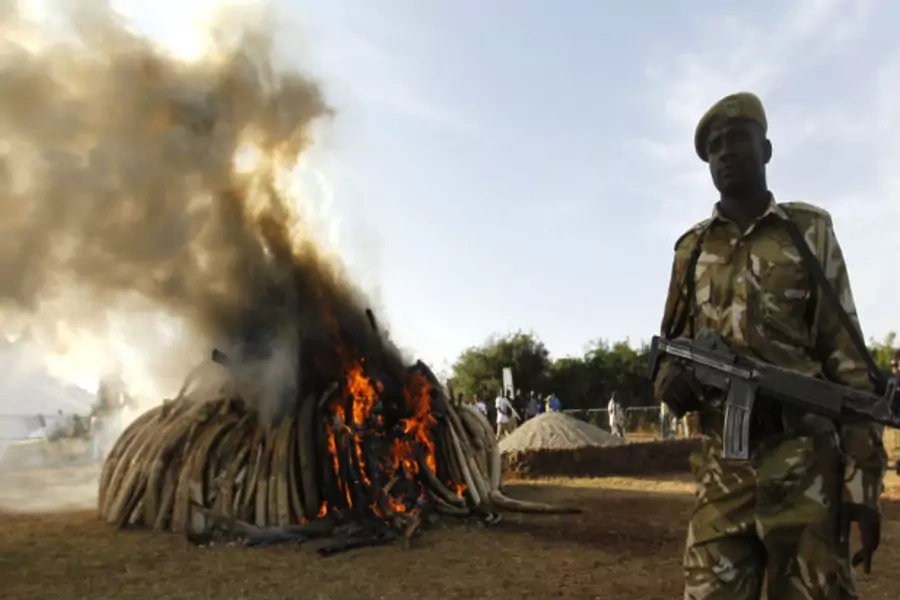More on:
This is a guest post by Allen Grane, research associate for the Council on Foreign Relations Africa Studies program.
Lately, conservationists and lovers of Africa’s diverse wildlife have been hard pressed for good news. From South Africa’s difficulty tackling rhino poaching to Zimbabwe’s sale of baby elephants to foreign countries, it often seems that African governments are either ill equipped to protect their animal populations or simply don’t care—or worse. However, it is important to remember that there are park rangers who are working tirelessly to protect and save Africa’s biodiversity.
In the face of the ever increasing threat of poaching, these rangers have shown great ingenuity, embracing innovative technology and new strategies to safeguard Africa’s wildlife.
More and more, these ranger organizations have been looking to the sky in order to combat poaching on the ground. The David Sheldrick Wildlife Trust (DSWT), which has raised orphaned elephants and rhinos in Kenya since 1977, uses aircraft to find and identify at risk animals and discover potential poachers. The Namibian government, Kruger National Park, and the Kenya Wildlife Service have all begun using unmanned aerial vehicles (UAVs). These organizations believe that by using aircrafts and UAVs they will be able not only to catch poachers in the act, but also to deter potential poachers before any animals are harmed.
Working a bit more down to earth, many conservancies and wildlife services have embraced the use of trained dogs. Groups in Kenya, South Africa, and the Democratic Republic of the Congo (DRC) have begun using dogs to aid in anti-poaching operations. The most popular breeds tend be bloodhounds and malinois/shepards. These dogs offer comparative advantages based on the mission and region: the hounds, which are trailing dogs, have been very successful in the forests of Kenya and in the DRC while the malinois/shepards, air-scenting dogs, are more widely used on the open terrain of South Africa.
In South Africa’s Kruger National Park, one private reserve, the Bulele nature reserve, has formed an all female team of rangers to conduct anti-poaching operations. The group, known as the Black Mambas, are unarmed and meant not only to stop poachers but to also change communal perception of rangers in local communities, who are often seen as playing the villain to the impoverished poachers’ Robin Hood. As a result, more women want to participate in anti-poaching and to help the Black Mambas. As one member of the organization put it, “I am a lady, I am going to have a baby. I want my baby to see a rhino, that’s why I am protecting it.” Over the last ten months, there hasn’t been a single rhino killed in their section of Kruger Park. Compare this to last year, when 827 of the 1215 rhinos reported poached in South Africa last year were in Kruger.
It is important to remember that despite all of the alarming trends of increased animal poaching over the last few years, there are people on the front lines continuing to fight to protect animals. However, the poaching epidemic is far too large and too international for rangers on the ground to counter it alone. Governments and international organizations must assist rangers in their fight by implementing and enforcing stricter laws against poaching and the trade of wildlife goods.
More on:
 Online Store
Online Store
